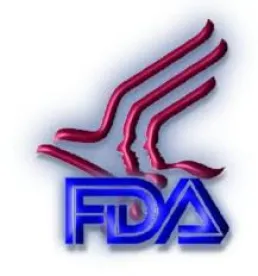The U.S. Government has recently taken a number of steps to reinvigorate its support of medical countermeasure development. In particular, by pursuing new methods of contracting, updating regulatory frameworks, and establishing additional incentives for capital investment, the U.S. Government has confirmed that countermeasure development remains a critical component of public health preparedness.
Now, over the past two weeks, a two-part congressional hearing has suggested that recent efforts may soon be accompanied by key legislative changes, including much needed funding authorizations and incentives. As a result, the upcoming reauthorization of the Pandemic and All-Hazards Preparedness Act (“PAHPA”), and its prior reauthorization, may present a critical opportunity to continue to improve public-private relationships in countermeasure development.
Recent Developments
Just over a year ago, Congress passed the 21st Century Cures Act for which we previously identified a number of changes significant to the broader life sciences community. Importantly for countermeasure development, the Act:
-
clarified and streamlined the contracting role of the Biomedical Advanced Research and Development Authority (“BARDA”);
-
authorized BARDA to work with an independent nonprofit entity to promote countermeasure development in part through a venture-capital approach;
-
created a priority review voucher program for new countermeasures that target specific threats; and
-
formally provided the U.S. Food and Drug Administration (“FDA”) with the ability to issue emergency use authorizations for unapproved animal drugs.
Since the passage of the 21st Century Cures Act, various components of the U.S. Government have continued to support countermeasure development. As detailed in a recent report, the U.S. Government made a wide range of investments for countermeasures and diagnostic throughout 2017 in the form of funding, expertise, and other resources. Targeted threats included influenza, Ebola, Zika, Marburg, anthrax, plague, glanders, tularemia, and Middle East Respiratory Syndrome Coronavirus or “MERS-CoV.” The U.S. Government also made efforts to address drug-resistant bacteria, including by awarding an additional $55 million to the Combating Antibiotic Resistant Bacteria Biopharmaceutical Accelerator or “CARB-X.”
More recently, on January 17, the FDA provided draft guidance on the countermeasure priority review program established under the 21st Century Cures Act. As explained in more detail in a separate post, the program incentivizes development by providing vouchers to sponsors of new approved countermeasures that target specific threats. The vouchers can be used to expedite the FDA’s review of other products, which in turn can result in early market entry and effectively extend the productive life of associated patent rights. The vouchers can also be sold to a third party for the same purpose. Although sponsors of countermeasures for Ebola, Marburg, and Zika had already been able to pursue vouchers under a related program, the 21st Century Cures Act and the FDA’s recent guidance allow sponsors of countermeasures for other threats to consider this incentive when making decisions about development.
PAHPA Reauthorization Hearing
Following this recent activity, on January 17 and January 23, the Senate Committee on Health, Education, Labor and Pensions held a two-part hearing involving discussions with U.S. Department of Health and Human Services, academic, state, non-profit, and industry representatives regarding current efforts to develop countermeasures and the reauthorization of PAHPA. These discussions highlighted a number of key topics, including:
-
Sustained Funding: the importance of reassuring industry members of the existence of a countermeasure market by providing sustained, predictable funding, potentially in the form of a multi-year advance appropriation similar to the ten-year appropriation for biodefense countermeasures ultimately used to fund procurements under the Project BioShield Act of 2004.
-
Pandemic Influenza: the importance of establishing and funding a fixed authorization for pandemic influenza preparedness efforts in lieu of periodically funding such efforts through ad hoc appropriations.
-
Emergency Fund: the benefit of maintaining a standing emergency fund that could be used for contracting and other purposes immediately in response to an outbreak or other threat as described in a bill that was introduced shortly after the hearing.
-
Additional Incentives: the Assistant Secretary for Preparedness and Response (“ASPR”) and the Commissioner of the FDA’s suggestion that reauthorizing legislation would benefit from including additional incentives for countermeasure development, with the ASPR characterizing long-term product sustainability concerns as a second “valley of death” that could frustrate the U.S. Government’s investments and the Commissioner acknowledging that priority review vouchers are decreasing in value as additional vouchers are issued.
-
Animal Rule and “One Health” Principles: the importance of continuing regulatory improvements under the animal rule and addressing “One Health” principles in preparedness efforts, including a suggestion by the Commissioner that animal drugs would benefit from being able to receive breakthrough therapy designations, which could streamline approval pathways and expand recent U.S. Government efforts to invest in countermeasures for animal-based threats.
-
Rapid Point-of-Care Diagnostics: the importance of developing rapid point-of-care diagnostics and their impact on the efficient allocation of limited public health resources.
Notably, the original sponsor of PAHPA opened the hearing by emphasizing the need for the U.S. Government to clearly define its needs and provide certainty in establishing approval pathways. He also concluded the hearing by highlighting the importance of defining a role for the U.S. Government in incentivizing development for countermeasures that lack a commercial market.
With respect to all preparedness activities, both witnesses and Senators consistently agreed that continued funding is critical to protecting public health. Importantly, investments made after the occurrence of a devastating outbreak or attack would do little to help affected individuals.
Prospects for 2018
With the breadth of steps recently taken to support countermeasure development, the key topics discussed in the hearing may continue to receive attention in the reauthorization process. Although significant achievements have been made in public preparedness efforts to date, the hearing highlighted that outstanding issues remain with respect to funding, contracting, approval pathways, and product sustainment. Whether these issues will ultimately addressed will become clearer as Congress nears the September 30 deadline for reauthorizing PAHPA.





 />i
/>i
